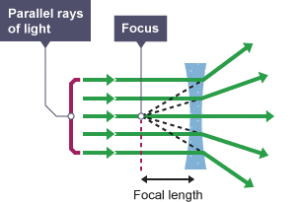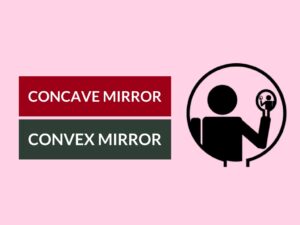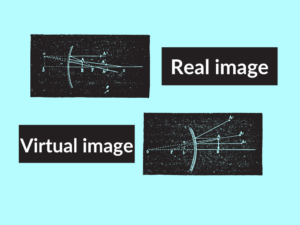Lenses are mainly light-controlling elements, used basically for image formation with visible light and infrared light. A lens is an optical device which is literally a piece of transparent material, such as glass or plastic or fiber, that refracts or bends the rays of light that pass through the lens in a definite way. Most lenses are made of glass or plastic. Usually, lenses have one or two curved surfaces. Lenses are of different types, orginallyConvex and Concave lenses are widely used in the world for various uses.
CONVEX LENS


A Convex Lens is thicker in the center, causing rays of light which are originally parallel to meet at a single point called the focal point. A convex lens bends light rays toward each other when the light passes through the lens. A convex lens magnifies the object makes objects larger and closer. The glass of Convex lenses is curved inward. Convex lenses are used to correct Long-Sightedness.
CONCAVE LENS


A Concave Lens is thinner in the middle, causing the rays of light to appear to originate from a single point. A concave lens spreads out light rays when light passes through the lens. They cannot form an image on a screen. Concave lenses make objects look smaller and closer than the original. The glasses of Concave lenses are curved outward. Concave lenses are used to correct Short- sightedness.
COMPARISON TABLE
| CONVEX LENS | CONCAVE LENS |
|---|---|
| A convex lens magnifies the object makes objects larger and closer and make things bigger because of the thicker center. | Concave lenses make objects look smaller and closer than the original because of the thinner center. |
| Shape | |
  |
  |
| Also Called as | |
| A Convex lens is also called as "Converging Lens" or "Positive Lens". | A Concave lens is also called as "Diverging Lens" or "Negative Lens". |
| Structure | |
| A convex lens is thicker at the center than at the edge. It magnifies or makes things look bigger. | A Concave lens is thinner in the middle and thicker at the edge. |
| Light Rays | |
| A convex lens bends light rays toward each other when the light passes through the lens. | A concave lens spreads out light rays when light passes through the lens. They cannot form an image on a screen. |
| Focal Length | |
| A Convex lens is also called as Positive Lens because of the positive focal length. | A Concave lens is also called as Negative Lens because of the negative focal length. |
| Parallel Rays | |
| Convex Lenses are called as Converging lenses because they cause parallel rays to converge. | Concave Lenses are called as Diverging lenses because they cause parallel rays to diverge. |
| Image Formation | |
| A convex lens can only form virtual image because the parallel rays passing through the lens bend towards one another. | A concave lens can form both virtual and real image because the parallel rays passing through the lens spread as they leave the lens. |
| Curve | |
| Convex lenses are curved inward. | Concave lenses are curved outward. |
| Used For | |
| Convex lenses are used to correct Long-Sightedness or Hypermetropia. | Concave lenses are used to correct Short- sightedness or Myopia. |
| Examples | |
| The examples of the convex lens are the human eye, cameras, microscopes, telescopes, etc. | The examples o the concave lens are the laser lights, binoculars, flashlights, etc. |
CONCLUSION
Concave lenses are often used together with convex lenses these lenses are called as “Concave – Convex lens”. Concave lens, when combined with the convex lenses, give sharper images.Most eyeglass lenses have combinations of concave and convex. In modern world eyeglasses allow millions of people to see and read comfortably. Cameras, telescopes, and microscopes which use different lens helping us to see the world in a better way.




